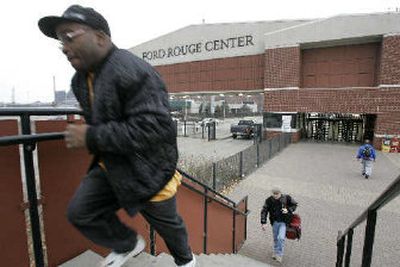38,000 accept Ford offers

DETROIT — Ford’s hourly work force is shrinking to half its current size, following the announcement Wednesday that 38,000 hourly workers have agreed to accept early retirement or buyout packages this year.
That still might not be enough to revive the nation’s second-largest automaker, however, which is contracting in the face of multibillion-dollar losses and fierce competition. Now, say analysts, Ford Motor Co. needs to rekindle interest in its cars and reclaim some market share lost to Asian rivals.
“They’ve got to learn how to build a product that is acceptable in the market at a good price,” Turnaround specialist Jim McTevia, of McTevia & Associates in Bingham Farms, said. “They’ve got to build it economically and they’ve got to sell it economically.”
Ford had expected 25,000 to 30,000 workers to sign up during an open enrollment period that expired Monday. The new reduction figure would amount to nearly 46 percent of the 83,000 unionized employees that Ford had at the start of the year.
That will eventually save Ford about $5 billion a year, but it still has a long way to go and more painful measures to take before it’s financially sound.
Ford lost $7 billion in the first nine months of the year. And it is losing money on a daily basis. The Dearborn-based automaker said Wednesday it expects to burn through $17 billion in cash from 2007 to 2009.
On Monday, it announced plans to mortgage its assets and raise about $18 billion in financing to pay for its restructuring.
McTevia said that move and the buyout figures signal that the automaker believes it will be able to operate profitably in the future. Ford has said it expects to return to profitability by 2009.
But McTevia said Ford faces stiff competition from companies on much stronger financial footing.
Ford’s share of the domestic market has declined from around 26 percent in the early 1990s to 17.6 percent at the end of October. In July, Ford sold fewer vehicles in the U.S. than Toyota Motor Corp. for the first time, but Ford’s U.S. sales have surpassed the Japanese company since then.
Pete Hastings, vice president of corporate fixed income at Morgan Keegan in Memphis, Tenn., said the buyout announcement “represents one step among many on a long road” to Ford’s turnaround. He said the automaker still must address its lost market share and structural costs when it renegotiates with the United Auto Workers next fall.
“They’ll probably need another round of restructuring to adjust to the lower capacity from falling market share,” Hastings said.
“They face tremendous challenges. It’s going to be tough for them to achieve the turnaround. It’s certainly a multiyear process, and I’m sure we’ll see plenty of changes in the upcoming months.”
As for the current round of buyouts, while workers can change their minds and back out of the deals, company officials predicted only a single-digit percentage would do so before their package takes effect.
Those who accepted the buyout packages will begin to leave the company in January, with the window open until Sept. 1, 2007, the company said.
At the Ford Rouge plant in Dearborn, on Wednesday, Vivian Davis said she’s thrilled to be among those taking an early retirement incentive.
“I was two years away anyway, so this is just helping me out,” said the 48-year-old assembly worker from Detroit. “I get 85 percent of my pay, stay at home for two years, and then get full retirement.”
Ford is also offering packages to 10,000 white-collar workers, with further unspecified reductions in 2009. The company said the reductions will bring manufacturing capacity more in line with lower demand and allow the company to become more competitive.
The figures released Wednesday include approximately 30,000 buyouts during the open signup period that concluded late Monday, plus about 8,000 who took deals offered at limited plants earlier this year. They also include about 6,000 hourly employees at former Visteon Corp. plants that Ford took back from the auto parts supplier earlier this year.
Joe Laymon, Ford group vice president for human resources and labor affairs, said the company’s new leadership understands winning concessions from unions isn’t enough. Ford will renegotiate contracts with the United Auto Workers next fall.
Ford shares rose 2 cents to close at $8.17 on the New York Stock Exchange on Wednesday.